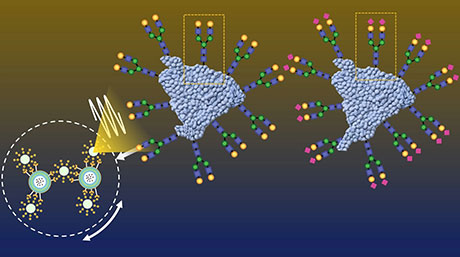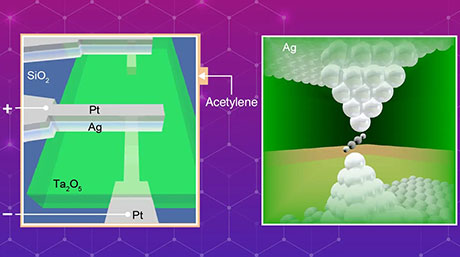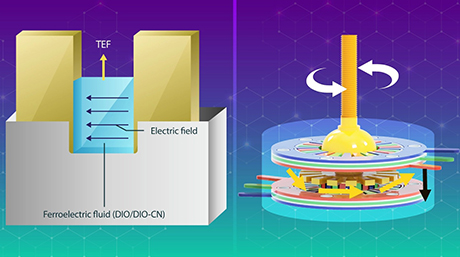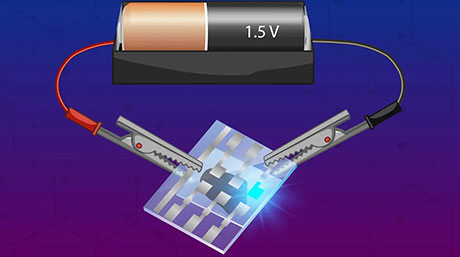Materials Science and Engineering News
Record Ammonia Production Achieved with Inexpensive Cobalt Catalyst at Low Temperatures
A new barium-containing oxyhydride electride (BaAl2O4-xHy) support material developed by Tokyo Tech researchers boosts the catalytic activity of cobalt catalysts, enabling low-temperature synthesis of ammonia with high efficiency. The material promotes the dissociation of nitrogen by donating electrons to cobalt, resulting in a catalytic activity that is comparable to ruthenium at low temperatures (340°C).
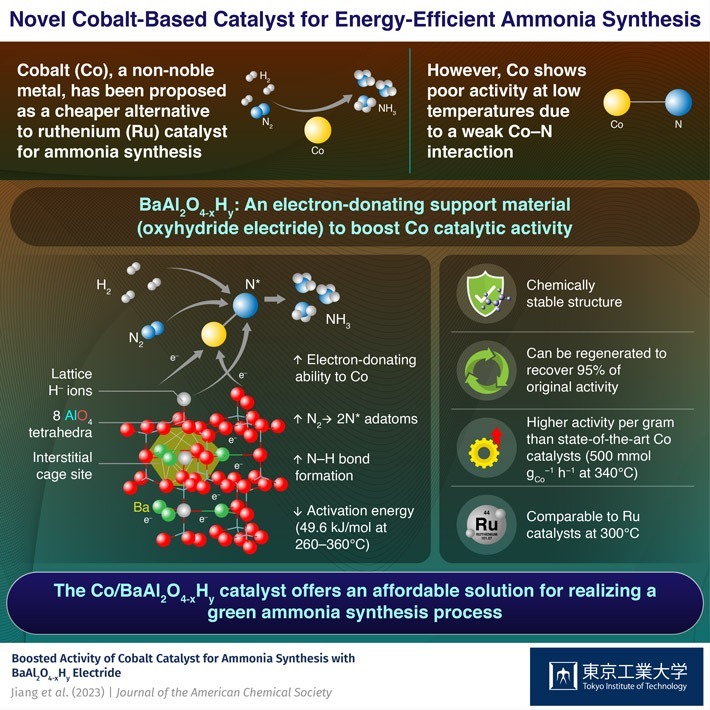
Ammonia (NH3) is one of the most widely produced chemicals in the world, with a production of over 187 million tons in 2020. About 85% of it is used to produce nitrogenous fertilizers, while the rest is used for refining petroleum, manufacturing a wide range of other chemicals, and creating synthetic fibers such as nylon. However, all this comes at a high energy cost. Currently, most of the ammonia is produced using the conventional Haber-Bosch process, which requires combining nitrogen and hydrogen at high temperatures (400-450°C) and pressures (200 atmospheres). As a result, scientists are actively seeking catalysts that can reduce the energy requirements for ammonia production and make the synthesis more sustainable.
Ruthenium (Ru), a noble metal, has been the primary candidate in this regard owing to its exceptional ability to absorb nitrogen at low temperatures. However, its high cost has prevented its widespread adoption in large-scale ammonia synthesis. While cobalt (Co) has been considered as a more cost-effective alternative, achieving the same catalytic activity as Ru at low temperatures has been difficult.
To enhance the catalytic activity of Co, a team of researchers including Professor Masaaki Kitano at Tokyo Institute of Technology (Tokyo Tech), Japan developed, in a recent study, a support material for Co nanoparticles. The material, a barium-containing oxyhydride electride called BaAl2O4-xHy, increases the catalytic activity of Co to a level comparable to that of Ru catalysts at low temperatures, and protects the H- ions and electrons from the effects of air and moisture. The breakthrough was published in the Journal of the American Chemical Society.
"We attempted to develop a barium-containing oxyhydride electride, Ba2Al2O4-xHy to obtain a highly effective and chemically durable catalyst and unlock a new approach to designing novel inorganic electride materials and triggering their application in other fields," explains Prof. Kitano.
How did the team achieve this feat? Put simply, BaAl2O4-xHy has a unique structure that promotes the dissociation of nitrogen over Co. The material exhibits a stuffed tridymite structure where AlO4 tetrahedra are linked to form a three-dimensional (3D) network structure, creating cage-like void spaces between the barium ions. These interstitial sites are like pockets for holding negative charges, enabling the material to donate electrons to Co and facilitate the breakdown of nitrogen molecules into nitrogen adatoms.
To improve the electron-donating ability of the material, the researchers introduced electrons to the interstitial sites by replacing the O2- lattice ions with H- ions (O2- (framework)+ ½ H2 = H- (framework) + 1/2 O2 + e- (cage)). The introduction of H- ions not only improved the electron-donating ability of the BaAl2O4 but also facilitated the desired reduction of nitrogen to ammonia.
By promoting both the cleavage of N2 and its subsequent reduction to ammonia, the Co/Ba2Al2O4-xHy catalyst could produce over 500 mmol of ammonia per gram of cobalt per hour, a record value for Co-based catalysts. Moreover, compared to conventional Co catalysts, which typically have activation energies for ammonia synthesis exceeding 100 kJ/mole, the proposed catalyst demonstrated an activation energy of just 48.9 kJ/mole.
Further, the stuffed tridymite structure was durable and reusable, with the AlO4-based tetrahedra framework shielding the lattice H- ions and electrons from oxidation. Finally, after exposing the Co/BaAl2O4-xHy to air, the researchers could recover up to 95% of its original activity by simply heating it in hydrogen.
With its good chemical stability, enhanced catalytic activity, and high reusability, the Co/BaAl2O4-xHy catalyst shows great promise for synthesizing ammonia at low temperatures. "This novel inorganic electride offers a new approach to developing highly effective and stable Ru-free catalysts for green ammonia synthesis," concludes Prof. Kitano.
- Reference
| Authors : | Yihao Jiang1, Ryu Takashima1, Takuya Nakao1, Masayoshi Miyazaki1, Yangfan Lu2, Masato Sasase1, Yasuhiro Niwa3, Hitoshi Abe3, Masaaki Kitano1,4*, Hideo Hosono1,5* |
|---|---|
| Title : | Boosted Activity of Cobalt Catalysts for Ammonia Synthesis with BaAl2O4-xHy Electrides |
| Journal : | Journal of the American Chemical Society |
| DOI : |
10.1021/jacs.3c01074 |
| Affiliations : |
1 MDX Research Center for Element Strategy, International Research Frontiers Initiative, Tokyo Institute of Technology 2 College of Materials Science and Engineering, Chongqing University 3 Institute of Materials Structure Science, High Energy Accelerator Research Organization (KEK) 4 Advanced Institute for Materials Research (WPI-AIMR), Tohoku University 5 WPI-MANA, National Institute for Materials Science |
|
* Corresponding authors' emails: kitano.m.aa@m.titech.ac.jp (Masaaki Kitano); hosono@mces.titech.ac.jp (Hideo Hosono) |
|
- Opening a New Frontier: PdMo Intermetallic Catalyst for Promoting CO2 Utilization | Tokyo Tech News
- Durable, Inexpensive Catalyst Reduces Carbon Footprint of Ammonia Production | Tokyo Tech News
- Breaking Ammonia: A New Catalyst to Generate Hydrogen from Ammonia at Low Temperatures | Tokyo Tech News
- Turning the Heat Down: Catalyzing Ammonia Formation at Lower Temperatures with Ruthenium | Tokyo Tech News
- Having it Both Ways: A Combined Strategy in Catalyst Design for Suzuki Cross-Couplings | Tokyo Tech News
- Filling the Void in Ammonia Synthesis: The Role of Nitrogen Vacancies in Catalysts | Tokyo Tech News
- Running on Empty: New Affordable Catalyst Relies on Nitrogen Vacancies to Produce Ammonia | Tokyo Tech News
- An 'exceptionally stable' single-atom catalyst: Single platinum atoms stabilized in C12A7 crystals | Tokyo Tech News
- A nanoscale lattice of palladium and yttrium makes for a superlative carbon-linking catalyst | Tokyo Tech News
- Efficient bottom-up synthesis of new perovskite material for the production of ammonia | Tokyo Tech News
- Highly efficient ammonia synthesis catalyst developed | Tokyo Tech News
- Development of highly active and stable ammonia synthesis catalyst under low temperatures | Tokyo Tech News
- Kitano Laboratory (Japanese)
- Masaaki Kitano | Researcher Finder - Tokyo Tech STAR Search
- Hideo Hosono | Researcher Finder - Tokyo Tech STAR Search
- MDX Research Center for Element Strategy (MDXES)
- Materials Science and Engineering Graduate Major|Education|Department of Materials Science and Engineering, School of Materials and Chemical Technology
- Materials Science and Engineering Undergraduate Major|Education|Department of Materials Science and Engineering, School of Materials and Chemical Technology
- Latest Research News
Further Information
Professor Masaaki Kitano
MDX Research Center for Element Strategy
International Research Frontiers Initiative,
Tokyo Institute of Technology
